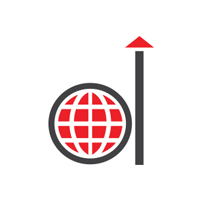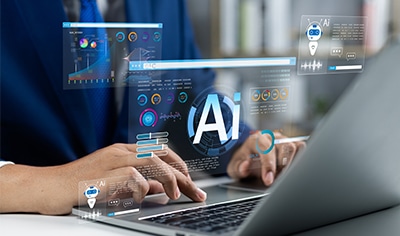The U.S. rolling out new tariffs wasn’t just another headline for tech leaders. It was a signal. A prompt to reassess not just cost structures or supplier contracts, but the very architecture of how innovation is built, scaled, and sustained in today’s unpredictable global setup.
These tariffs aren’t just making things more expensive—they’re shifting the ground rules that tech has relied on for decades.
A Structural Shock, Not a Speed Bump
Surely, the new tariffs directly impact the very components that fuel innovation—from chipsets and lithium-ion batteries to solar cells and circuit boards. But the real disruption goes deeper. What we’re witnessing is strategic interference with the global innovation networks businesses have long relied on.
This shake-up is affecting more than just costs. R&D timelines are slipping, sourcing strategies are being rethought, and time-to-market cycles are getting stretched. Companies are coming to terms with a hard truth: the global operating models once built for efficiency are now exposed—vulnerable to policy volatility, geopolitical tension, and economic uncertainty.
Disruptions such as trade wars push innovation leaders to rethink:
- Supplier dependency: Who holds the keys to your innovation timeline?
- Procurement agility: Can you switch, scale, or nearshore quickly—without sacrificing quality?
- Product viability: Will cost escalations impact feasibility or competitiveness?
- Risk exposure: Are you modeling the second- and third-order effects of trade shifts?
Without intelligence systems designed to predict, simulate, and optimize these variables in real time, most organizations will find themselves reacting too slowly—or too late.
AI: The Strategic Response to Economic Turbulence
According to the C-Suite Outlook 2025 by The Conference Board, CEOs worldwide now rank escalating trade wars as one of the most pressing geopolitical threats to business. In fact, U.S.-EU-China tensions are seen as a high-impact concern by 34% of U.S. CEOs and nearly 50% of CEOs across Asia and Europe.
Economic disruption is no longer a once-in-a-decade event—it’s a persistent variable. From inflation spikes and resource shortages to shifting regulatory landscapes and geopolitical shocks, businesses are navigating an environment where uncertainty is the norm, not the exception.
In such volatile times, AI won’t end the disruptions—but surely can eliminate guesswork. When deeply embedded into operations, AI enables organizations to absorb shocks faster, make better decisions under uncertainty, and uncover new pathways to resilience and growth.
Here’s how tech leaders are putting AI to work during economic disruptions:
1. Predictive Supply Chain Intelligence
Supply chains can no longer be optimized solely for cost, they need to be resilient, agile, and intelligent. AI makes this shift possible by analyzing thousands of variables in real time—from political stability and weather risks to labor availability and shipping bottlenecks.
In 2025, approximately 80% of new technological solutions for supply chain management are expected to utilize artificial intelligence. This surge is driven by AI’s proven benefits, including, 15% reduction in logistics costs, 35% improvement in inventory levels, and 65% increase in service levels.
For tech leaders, this means:
- Replacing quarterly risk assessments with continuous, AI-driven monitoring
- Developing supplier scorecards that incorporate geopolitical factors
- Creating dynamic inventory strategies that flex to global events in real time
2. Cost Modeling with Strategic Depth
From raw material fluctuations to energy volatility and shifting tax regimes, traditional cost forecasting isn’t enough. AI-powered models simulate how fluctuating inputs—raw materials, energy, shipping, policy shifts—affect unit economics and overall profitability.
More than just cost containment, this enables:
- Intelligent inventory prioritization
- Infrastructure and asset optimization
- Reallocation of savings to core innovation functions
3. R&D and Design Optimization
When certain components become prohibitively expensive, AI can guide engineering teams toward alternative designs—recommending compliant materials, modeling performance, and speeding time-to-market with reduced risk.
According to a 2025 Capgemini report, 65% of executives identify AI-powered robotics as one of the top three trends shaping the engineering landscape this year.
4. Localization and Diversification Planning
One of the loudest messages from the recent trade shift? It’s time to build more resilient, regionalized supply models. AI helps evaluate the feasibility of localization at scale—factoring in talent, infrastructure, logistics, and long-term sustainability.
Why Now: The Strategic Cost of Inaction
Every industry report, investor call, and policy update points to the same trend: volatility is no longer episodic. It’s structural. And yet, many enterprises still treat AI as—something to explore in pockets, pilot in labs, or delegate to innovation teams.
But with trade policies now dictating innovation timelines, AI must become core to enterprise strategy, not an accessory.
Think of it this way: the companies that restructured their digital cores during the pandemic emerged faster, leaner, and more competitive. The same principle applies here. The AI-mature organizations will be those who outmaneuver regulatory hurdles, protect margins, and retain velocity.
Five Imperatives for Tech Leaders
If you’re leading technology in this environment, this is not a time for incremental adjustments. Here are five critical actions to take now:
I. Assess your AI-readiness
Understand not just where your vulnerabilities lie, but how prepared you are to address them with intelligent systems. Prioritize closing these gaps.
II. Recalculate your technology economics
Consider leaner architectures, edge deployment options, and model optimization techniques that can deliver similar results.
III. Embed operational AI throughout your technology stack
From infrastructure management to service operations to security—implement intelligence that can adapt to external shocks and continuously optimize for changing conditions.
IV. Design for adaptability, not just redundancy
Diversify your technology stack and sourcing, yes—but more importantly, build systems that can pivot in real-time when trade conditions change. Static backup plans aren’t sufficient anymore.
V. Integrate policy intelligence into technology strategy
The line between technology decisions and policy shifts is blurring. Ensure your team understands not just current rules but emerging trends in the regulatory landscape.
This Isn’t Just Disruption—It’s a Strategic Reset
There’s no ‘pause’ button in the global tech race. Economic shocks such as tariff hikes may slow down components, but not customer expectations. Companies that wait for clarity will find themselves outrun by competitors who used this moment to future-proof.
This isn’t about reacting to one policy. It’s about rewriting how your business competes in a world where geopolitics, cost, and innovation are permanently entangled.
I believe we live in a world where policies move faster than product roadmaps, so intelligence isn’t optional—it’s your competitive edge.






